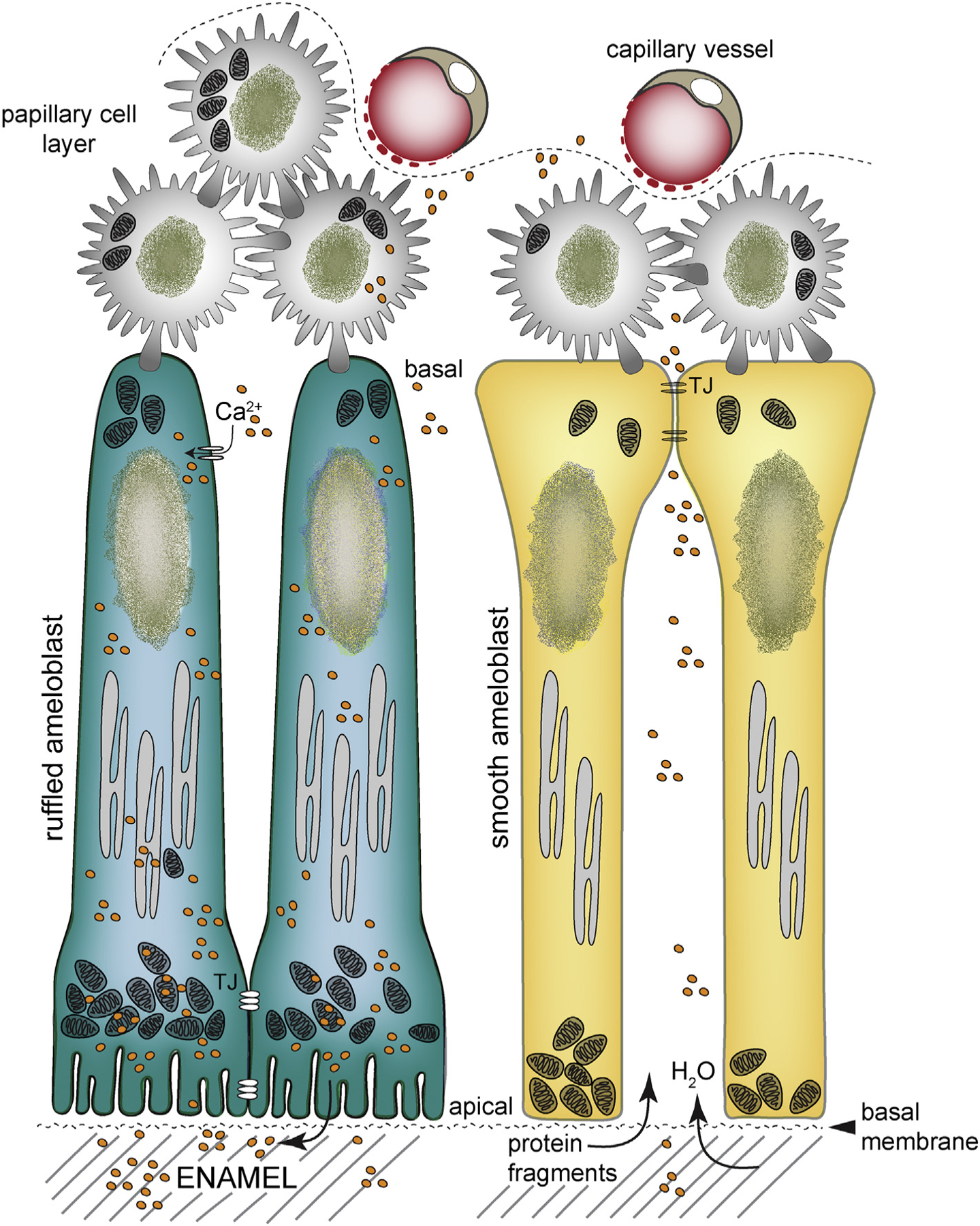Fig. 3.

Schematic of ruffled- and smooth-ended ameloblasts: Maturation stage ameloblasts have two main morphologies. In the ruffled-ended ameloblasts (RA), mitochondria localize to the infra- and supranuclear cytoplasm clustering between the nucleus and the ruffled-border. In smooth-ended ameloblasts (SA), mitochondria are found near the apical pole. RA have tight junctions (TJ) apically limiting the flow of ions and molecules between cells. RA is the predominant morphology (70% of cells in the maturation stage) and will cycle into SA and vice versa after a few hours several times per day. Ca2+ uptake is modulated by SOCE channels. Ca2+ ions move across the RA to reach the ruffled-border, but in the SA phase ions can move between cells. In the SA morphology, leaky TJ are found at the basal pole but do not have junctions distally. Water and protein fragments can diffuse into the wider intercellular spaces of SA. The cyclic modulation of RA to SA is poorly understood, but is required for proper enamel mineralization. Papillary cells attach at the basal pole of ameloblasts and are in close proximity to blood vessels. A basal membrane attaches the cells to the mineralizing matrix. Modified from ref. [15].
